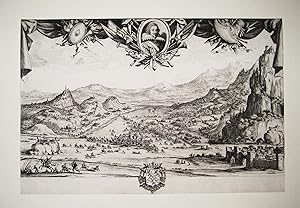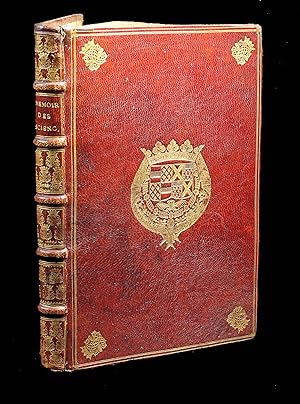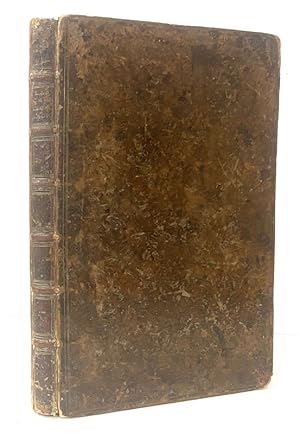l art (Plus de 1 400 résultats)
Type d'article
- Tous les types d'articles
- Livres (1 123)
- Magazines & Périodiques
- Bandes dessinées
- Partitions de musique (2)
- Art, Affiches et Gravures (202)
- Photographies
- Cartes (96)
-
Manuscrits &
Papiers anciens (2)
Etat
Reliure
Particularités
- Edition originale (355)
- Signé (51)
- Jaquette (8)
- Avec images (1 173)
- Sans impression à la demande
Livraison gratuite
Pays
Evaluation du vendeur
-
L'ART DE NAVIGER DEMONTRÉ PAR PRINCIPES, & CONFIRMÉ PAR PLUSIEURS OBSERVATIONS TIRÉES DE L'EXPERIENCE
Edité par Estienne Michallet, Paris, 1677
Vendeur : William Reese Company - Americana, New Haven, CT, Etats-Unis
[20],274,46,[7]pp. with in-text woodcut illustrations throughout, plus one large folding engraved plate, 19 x 14 3/4 inches. Quarto. Contemporary calf, spine gilt. Boards and spine rubbed and worn, particularly top and bottom of spine and corners. Ink inscription on front board. Contemporary ownership inscription on titlepage. Moderate age-toning. Large folding engraved plate with old reinforcement on verso. Forty-six numbered printed tables (some folding) prior to [7]pp. index. Overall, a good copy. Dechales' scarce introductory navigation manual, with numerous woodcut illustrations and diagrams. Included are sections devoted to basic terminology; principles of the sphere, geometry, and other essentials for navigation; a treatise concerning vessels; and techniques for proper navigation. The preface includes a four-page chronological bibliography of earlier navigation texts, including references to Columbus, Pedro Nuñes, Pedro Medina, Petrus Apianus, and Andrés García de Céspedes. Rare, with only the Macclesfield and Frank Streeter copies having appeared at auction in ABPC in the last thirty years. OCLC locates four copies. BELL D93.
-
The Artificial Clock-maker . . . A Treatise of Watch, and Clock-work: Wherein the Art of Calculating Numbers for most sorts of Movements is explained to the capacity of the Unlearned. Also the History of Clock-work, both Ancient and Modern. With other Useful Matters never before Published.
Edité par James Knapton, 1696
Vendeur : Symonds Rare Books Ltd, London, Royaume-Uni
Livre Edition originale
Hardcover. Etat : Near Fine. 1st Edition. DERHAM, William (Assisted by Hooke and Tompion). The Artificial Clock-maker . . . A Treatise of Watch, and Clock-work: Wherein the Art of Calculating Numbers for most sorts of Movements is explained to the capacity of the Unlearned. Also the History of Clock-work, both Ancient and Modern. With other Useful Matters never before Published. London, James Knapton, 1696. Quarto, pp. vi 11, 132. FIRST EDITION. Very light browning, small tear in bottom margin of L 4 and R 4, neither affecting text. Single blind-stamped border with decorative motifs on corners, compartmentalised spine, gilt title on red leather in one, a clean and firm copy, bound in contemporary mottled calf well preserved. Ex-libris E.M. Bartlett. The Kenney copy. William Derham, vicar of Upminster, Essex, is mainly known to horologists for this little treatise on clocks and watches. From the Restoration onwards, horology became a subject of scientific discussion and investigation. It was largely the innovations of Robert Hooke and his contemporary, Thomas Tompion, which enabled the field to move beyond imitation by blacksmiths. Derham s work is a summation of horological discoveries to date and reflects the newly found serious nature of this field of study. In the preface of The Artificial Clock-Maker he acknowledged the help he had received from Hooke and Tompion. In the History of the Modern Inventions, I have had (among some others), the assistance chiefly of the ingenious Dr H . . . and Dr T . . .: The former being the Author of some, and well acquainted with others, of the Mechanical Inventions of that fertile Reign of King Charles II and the latter actually concerned in all, or most of the late inventions in Clock-work, by means of his famed skill in that, and other Mechanick operations . Derham was also a naturalist, scientist, and theologian. He contributed to the Transactions of the Royal Society and was elected fellow in 1702. On the accession of George I, Derham became chaplain to the Prince of Wales, afterwards George II, and was installed canon of Windsor in September 1716. (See also R. W. Symonds, (incidentally the grandfather of Thomas.J. Symonds), Thomas Tompion, (London 1951)). Wing D 1099 (7 locations in UK; Clark Library, Boston Public Library, Library Company of Philadelphia and Yale only in US).
-
Occasionall Meditations. By Ios: Exon. Set forth by R.H.
Edité par London, B. Alsop and T. Fawcet [?], for Nath: Butter, 1630
Vendeur : Sokol Books Ltd. ABA ILAB, London, Royaume-Uni
Livre Edition originale
Hardcover. Etat : Fine. 1st Edition. FIRST EDITION. 12mo. pp. [xxiv], 251, [i]. A-L¹² M . Roman letter some Italic. Title within ornate woodcut border, text and tile with box rule, woodcut initials and headpieces, typographical ornaments, occasional (editorial?) manuscript corrections in the text Mice. Josef Thorpe August 20 1707 on fly, John Bright in a contemporary hand at the end of the text, book-label of John Sparrow on pastedown, Robert S Pirie s below. Some age yellowing. A fine copy, crisp and clean in very charming contemporary English polished limp vellum, covers bordered with a single gilt rule, figure of an angel gilt stamped at centres, spine triple gilt ruled in compartments, fleurons gilt at centres, yapp edges, remains of blue silk ties. First edition of this important work of meditations full of the the epigrammatic concision and wit that are the hallmark of Hall s work; a fine copy in a charming contemporary binding. These meditations differ from his earlier works in that they focus on observations from nature and moments that occur in every day life. The Occasional Meditations show the latest development of Hall s meditative practices. In order to gain inspiration, Hall went directly to nature. He turns from focusing on scripture or other heavenly things to mediation on nature. This is different from the Lutheran tradition because it goes against the sola scriptura tradition .the meditations can focus on any object in nature This focusing is the starting point for leading the reader to a religious or spiritual experience. Darrau: The Reception of English Puritan Literature in Germany. Bishop Hall s The Art of Divine Meditation (1606, 1633) and the three editions of Occasional Meditations (1630, 1631, 1633) warrant . recognition. Contemporaries noted their influence or praised the divine, and eloquent Contemplations, and occasional Meditations of Doctor Hall ; and modern scholars emphasise Hall s importance in the development of Protestant meditation. . The genre commonly associated with Hall and practised by other seventeenth century authors turns on a distinction from formal meditation. By its nature, contemporary commentary notes, the occasional meditation resists the formality of the meditative practice variously described as set, solemn, or deliberate. Bishop Hall stresses there may be much use, no rule for the meditative mode that depends upon suddain invention not composed by study. It is essentially occasional or, in the often-repeated synonyms, extemporal, sudden, quick, rapt, and ejaculatory. . Hall s fundamental distinction between the extemporal and the deliberate outward occurrences offered to the mind as opposed to those wrought from the heart, refines the accepted belief that meditation in general was a bending of the mind upon spiritual concerns. Raymond A. Anselment Robert Boyle and the Art of Occasional Meditation Joseph Hall (1574-1656), Bishop of Norwich, poet, moralist, satirist, controversialist (against Milton, i.a.), devotional writer, theological commentator, autobiographer and practical essayist, was one of the leading hommes de lettres of the Jacobean age. He was at the centre of public life under James I representing that King at the Synod of Dort in 1618, assisting in his negotiations with the Scots and in Lord Doncaster s French embassy and was foremost among the defenders of the temporal and spiritual powers of the Bishops in the Puritan Parliament of 1640-41. However, it is as a writer that Hall is now remembered. Fuller called him the English Seneca for his pure, plain, and full style . While Hall may not have been the first English satirist, as he claimed, he certainly introduced the Juvenalian satire into English. ESTC S124972 STC 12687. Not in Pforzheimer or Grolier.
-
Gemmarum et Lapidum Historia. Quam olim edidit Anselmus Boetius de Boot, Brugensis, Rudolphi II. imperatoris Medicus. Postea Adrianus Tollius, Lugd.-Bat., M. D., recensuit; figuris melioribus, & commentariis pluribus illustravit, & indice auxit multo locupletiore. Tertia editio longe purgatissima. Cui accedunt Ioannis De Laet, Antvverpiani, De Gemmis & Lapidibus libri II. Et Theophrasti liber De Lapidibus, Gr. & Lat. cum brevibus notis
Edité par Joannes Maire, Leiden, 1647
Vendeur : Liber Antiquus Early Books & Manuscripts, Chevy Chase, MD, Etats-Unis
Hardcover. Etat : Fine. Bound in contemporary Dutch vellum (lower "yapped" edge a bit warped). Complete with both folding tables. Illustrated with eighty-seven (87) woodcuts of gems and minerals, including geodes, hematite, crystals, corral, and fossils. A very good copy, with scattered mild soiling and light foxing, very lightly stained at upper margin; a few gatherings lightly toned, tables a little browned at the head. Tiny marginal tear on title, second leaf, and leaf N2; some dog-eared corners. Nick in blank lower margin of gatherings M and N (second sequence) far from the text, corners of leaves in gathering L (second sequence) lightly creased. Third and best edition (1st 1609, 2nd 1636), edited by the Belgian physician Adrian Toll (1610-1675), of "one of the most important mineralogical works of the seventeenth century, marking a transition over previous lapidaries" (Schuh). The mineralogical researches of Jan De Laet and the translation (presumably by de Laet) of Theophrastus' "On Stones" are added here for the 1st time. "In his 'Gemmarum et Lapidum Historia' Boodt, the Bruges humanist and court physician to Rudolf II of Bohemia, made the first attempt at a systematic description of minerals, dividing the minerals into great and small, rare and common, hard and soft, combustible and incombustible, transparent and opaque. He uses a scale of hardness expressed in three degrees and notes the crystalline forms of some minerals (triangular, quadratic, and hexangular). Boodt criticizes some of the views of Aristotle, Pliny, Paracelsus, and others, but accepts the existence of the four elements and three principles, although he also mentions atoms. He enumerates 600 minerals that he knows from personal observation, and describes their properties, values, imitations and medical applications. There are also tables of values of diamonds according to their size and a short description of the polishing of precious stones. Boodt cites nineteen authors and, besides the minerals known to him, gives a list of 233 minerals whose names he knows from Pliny and Bartholomeus Anglicus, among others." (DSB) "De Boodt assembled virtually all of the knowledge then extant.by far the most thorough and complete up to date. [The book] is further distinguished by its intimate knowledge of the art of the lapidary and must therefore be regarded as the first treatise to offer more than the briefest views of gem cutting." (Sinkakas) "One of the most important mineralogical works of the seventeenth century, Boodt's work marks a transition over previous lapidaries. A new era was marked with its publication, one in which the believes of the past began to be challenged, and the researchers began to use hypothesis and experimentation to present new ideas. Boodt was skeptical of the curative virtues of various gems. He suspected that it was coincidental that a specific type of gemstone was associated with a sick person who became well. Instead, he believed if stones had curative powers it was because they worked in concert with the body to effect a cure, not any supernatural property. "Discussing the properties of stones, Boodt gives a long discussion of hardness. He provides the earliest system of hardness grading for the various stones, which acted as a crude index to distinguish imitation gems from genuine. He distinguished three degrees of hardness and also included softness as a related but different property. Soft stones are considered such if fingers alone are sufficient to rub away the surface. Hard stones are called hard when they can neither be rubbed away with fingers nor cut by iron. Hard stones are classified under three categories: (1) a steel file can scratch the stone, (2) only the use of the Smyrna stone [emerald??] can cut the surface, and (3) those that can only be rubbed away with a diamond point." (Mineralogical Record). THIRD EDITION, EXPANDED AND WITH ADDITIONAL TEXTS.
-
Le Petit Tout dans lequel l'Homme aura la connoissance de soy-mesme par l'intelligence de ses propres causes scavoir, de Dieu, comme cause efficiente. Du corps, comme cause materielle. De l'âme comme cause formelle. De la béatitude comme cause finale. Ensemble les moyens d'y arriver. Divisé en III. parties et en IV tomes.
Edité par chez Michel Vaugon, A Paris, 1664
Edition originale
3 parties en 3 vol. in-4 de (18)-319-(13) pp. ; (12)-501-(47) pp. ; (10)-480-(32) pp. ; (16)-1036-(40) pp., vignettes gravées in-texte, veau brun granité, dos orné à nerfs (reliure de l'époque). Édition originale, très rare complète, sortie des presses de François Boyer à Orléans. Encyclopédie à visée religieuse qui embrasse la théologie, l'anatomie, la physiologie, la géographie, l'histoire naturelle, le droit canon, l'histoire de l'Eglise et du monde connu avec des chapitres sur le temps et ses divisions, les anges et les démons, les planètes et les comètes, l'astrologie, la musique, une échelle des couleurs (qui préfigure le Père Castel), une échelle des odeurs, des saveurs et des nuances, la division de la terre et la géographie des météores, les minéraux, les animaux, la pharmacie, la chimie etc. Le Petit-tout se présente sous la forme d'un dialogue à trois personnages : Adelphe, le maître (Chevillard lui-même), Egisthon le disciple, enfin Clite l'opérateur. « Ce livre est surtout curieux en ce sens qu'il fait voir quel était encore vers le milieu du XVIIe siècle les croyances de la masse des gens adorés aux sciences dont il n'est ici que l'écho. N'y a-t-il pas intérêt à voir jusqu'à quel point, à la suite du siècle de Galilée, de Bacon, de Montaigne et de Charron, dans celui de Pascal et de Descartes, ces idées erronées, ces rêveries imprégnaient encore l'esprit public pour avoir eu tant de pouvoir sur un homme d'une piété solide, d'une érudition étendue et d'un caractère qui ne manque pas d'indépendance. Tant la vérité et les idées saines ont peine à se faire jour. Nous ne le connaissions que de nom et nous avouons que nous l'avons trouvé bien supérieur à la réputation assez ridicule qui lui est faite » (Mémoires de la Société des belles-lettres et arts d'Orléans, 1863, p. 224).Poète français né à Orléans, François Chevillard fut chanoine dans sa ville natale puis curé de Saint-Germain. Il composa des poésies et se distingua surtout dans le genre élégiaque ; tous ses écrits furent imprimés à Orléans dont le plus fameux reste la pièce La Mort de Théandre (1649).Bon exemplaire à très grandes marges. Traces de mouillures au début du tome I et marginales sur les 3 volumes ; coiffes habilement restaurées. Ex-libris manuscrit « Ce présent petit tout est à nous Gautier Félix » avec cette note « vendu a Vermelly a Jargeau pour 2#10s me doit 2# ».Cioranescu, I, 19192 ; Baguenault de Viéville, Notice sur F. Chevillard (Orléans, 1886) ; Henri Brémond, Histoire littéraire du sentiment religieux en France, (tome I, chapitre 4, 1916).
-
Lettres missives du Sieur de Rangouse. [Lettres héroïques aux grands de l'Estat].
Edité par chez l'auteur, Paris, 1644
Edition originale
Petit in-8 de 1 feuillet manuscrit, (8)-281 pp., vélin ivoire, dos lisse et plats entièrement recouverts d'un décor géométrique dessiné et peint à l'encre brune, tranches rouges (reliure de l'époque). Belle impression avec les caractères de civilité de Pierre Moreau, imitant l'écriture cursive. Moreau, maître-écrivain et ancien clerc aux Finances, avait fait graver le premier caractère d'écriture. Il obtint un brevet d'Imprimeur ordinaire du Roi, mais il semble qu'il eut à subir des persécutions de la Communauté des libraires et imprimeurs, et un arrêt de 1648 lui fit défense d'exercer.Rare édition originale de la seconde partie seule des Lettres héroïques aux grands de l'Estat. Le sieur Rangouze s'était fait une spécialité de l'écriture de panégyriques destinés aux grands de ce monde et qu'il vendait fort cher aux intéressés.Exemplaire de la seconde partie seule des Lettres héroïques aux grands de l'Estat, dont le volume débute par un titre manuscrit factice, 4 feuillets Clef des Missives contenues en ce Livre, le titre de départ ; le volume s'arrête à la p. 281 avec le mot Fin imprimé ; signalons, au bas de la page 274, le mot Finqui a été ajouté à la plume à l'époque. Il faut signaler que la plupart des ouvrages de Rangouze ont une collation irrégulière et souvent fantaisiste.Le décor peint à l'encre sur le vélin est attribué à François-Nicolas Bédigis (1738-1814) qui rassembla une collection de livres sur l'écriture et sur la calligraphie, et auquel on attribue généralement les décors de ses exemplaires. Maître calligraphe parisien, François-Nicolas Bédigis (1738-1814) est l'auteur de six ouvrages sur la pratique d'un art qu'il enseignait à l'Académie royale d'écriture.On ne connaît qu'un petit nombre de ses curieuses reliures ornées de motifs géométriques à l'encre. Sa collection jointe à celle de son fils Philippe, fut vendue aux enchères à Paris en 1850, et fut en partie rachetée par le calligraphe et collectionneur Auguste-Guillaume Taupier (1798-1870?).I. de Conihout et F. Gabriel, Poésie et calligraphie imprimée à Paris au XVIIe siècle, n°8 ; Berès, cat. 93, 2004, Livres rares. Six siècles de reliures, n° 88 et 89 ; Claude Mediavilla, Histoire de la calligraphie française, pp. 281-285.
-
Linguae vitia & Remedia emblematice expressa per illustrem ac Rever
Edité par Apud Vidua Cnobbaert, 1652
Livre Edition originale
Couverture rigide. - Apud Vidua Cnobbaert, Anvers 1652, in-16 (10,5x7,5cm), (24 p.) 191 pp., relié. - Seconde édition, après celle de 1631. Elle est illustrée d'un très beau titre frontispice et de 94 figures à pleine page, gravés en taille-douce par Andries Pauwels et Jacobus Neefs d'après les dessins d'Abraham Van Diepenbeeck, élève et ami de Pierre-Paul Rubens avec qui il travailla sur plusieurs compositions. La gravure de la page 152 a été imprimée à l'envers. Les gravures sont d'une belle exécution et d'un noir profond. Notre exemplaire est bien complet du feuillet b4 (comprenant la gravure des tonneaux) qui manque souvent, mais pas du feuillet blanc A8 (p.15-16) supprimé par le relieur comme dans la grande majorité des exemplaires. Reliure postérieure en plein vélin de réemploi portant quelques inscriptions anciennes à la plume, dos lisse muet. Une très discrète restauration au dos de la page de faux-titre. L'ouvrage est constitué de deux parties : l'une traite des vices de la parole (loquacité, tromperie, injure, vulgarité, faux témoignage.) et la seconde propose des remèdes. Les quatrains présentent en regard de très beaux emblèmes composés par Abraham Van Diepenbeeck et montrant toutes sortes de scènes de la vie quotidienne ainsi que de nombreux animaux comme des éléphants, des lions, des oiseaux, des serpents ou des plantes. Bel exemplaire de ce rare livre d'emblèmes « de poche », uvre d'un chanoine brugeois issu de la branche bâtarde des ducs de Bourgogne. [ENGLISH TRANSLATION FOLLOWS] Linguae vitia & Remedia emblematice expressa per illustrem ac Rever Apud Vidua Cnobbaert, Anvers 1652, 16° (10,5x7,5cm), (24 p.) 191 pp., bound. Second edition after the first published in 1631. Beautiful engraved title and 94 emblematic full-page engravings by Andries Pauwels et Jacobus Neefs after Abraham van Diepenbeeck, friend and pupil of Peter Paul Rubens with whom he worked on several compositions. Plate on p.152 printed upside down. Beautifully executed and deeply contrasted engravings. Complete with b4 (with an engraving) often missing. Blank A8 is missing, like most copies. Later vellum binding with some notes in ink. A very small restoration to the verso of the half-title page. The work is divided into two parts: one on the vices of speech (loquacity, deceit, insult, vulgarity, false testimony.) and the second with a remedy to each one. The quatrains are accompanied by beautiful emblems by Abraham Van Diepenbeeck with daily life scenes as well as numerous animals such as elephants, lions, birds, snakes, and plants. A fine copy of this rare pocketbook of emblems, written by a Bruges Canon descendant of an illegitimate branch of the House of Burgundy. (24 p.) 191 pp.
-
Vues de Rome: [A collection of seventeen 17th century views of Rome and Venice? consisting of the complete suite of 12 views according to Faucheux in their first states, with 4 duplicates added in their 2nd state, plus 1 unrelated Giovanni Battista Piranesi etching of the ?Ponte Senatorio oggi detto Ponte rotto? after Israel Silvestre.]
Edité par c. 1650 [1640-1670]., Paris, 1650
Vendeur : Alexandre Antique Prints, Maps & Books, Toronto, ON, Canada
Edition originale
Edition : First Edition, Bound in recent blue boards; Plates approx.170x130mm trimmed and carefully attached to portefolio sheets., Titles in both Italian and French.Israel Sylvestre (or Silvestre) was ?an eminent French engraver and son of Gilles Silvestre? . He formed his style on Stefano Della Bella and Jacques Callot, and, in turn, appears to have been imitated, by Sebastian Le Clerc. He designed, etched, and engraved numerous landscapes and views, decorating them with small figures, minutely drawn, and touched with uncommon spirit. His merit recommended him to Louis XIV., who employed him in designing and engraving views of royal palaces, public festivals, and the places Louis had conquered. He was appointed drawing-master to the Dauphin, and was made a member of the Academy. He went to Italy twice, where he found many subjects. His plates amount to upwards of one thousand. He died in Paris in 1691.? The present suite comprises:1. Chiesa di Sta Francisca Romana in Campo Vaccine. 2. Parte del Ponte Ste Maria3. Veduta del Coliseo4. Veduta del ponte S.te Maria 5. Veduta di una Parte del Campidoglio ? first and second states 6. Veduta del Arco di Septimio Seuero, et del Campidoglio 7. Veduta del Tempio di Bacco a S.ta Agnesa fuor di Roma8. Veduta di Campo Vaccina9. Veduta del Arco di Constantino, et del Coliseo ? first and second states10. Altra veduta di Interno Roma 11. Veduta e Prospetiua della Piaza di St Marco di Venezia ? first and second states12. Veduta della Dogana di Venezia ? first and second statesAdditional plate of Piranesi inserted between plates numbers four and five (255x125mm); entitled : « Ponte Senatorio oggi detto Ponte rotto « with small marginal stain. , Size : Oblong small folio. , Illustrated with 17 copper engravings; this includes the complete and rare suite of twelve views, according to Faucheux in their first state, along with four duplicates added in their second state, plus one unrelated engraving by G.B.Piranesi. Plates depicting mostly views of Rome and two of Venice., E.P. Goldschmidt [64 Drayton Gardens, SW 10 9SB], purchased and in private collection since., References : Faucheux, L. E. ?Catalogue raisonne de toutes les estampes qui forment l??uvre d?Israel Silvestre. Paris, 1857 [pp. 50-51 cited] ; Brunet V p.389. This near fine and very rare example with plates clean and crisp, except for additional plate.
-
THE ENGLISH HUSBANDMAN, drawne into two Bookes, and each Booke in two Parts, each with its own title page.
Edité par London printed for Henry Taunton and to be sold at his shop in Saint Dunstans Church Yard in Fleet street, 1635
Vendeur : Roger Middleton P.B.F.A., Oxford, Royaume-Uni
Membre d'association : PBFA
TITLE CONTINUED: The First Part contayning the knowledge of husbandly duties, the nature of all sorts of soiles within this kingdome, the manner of tillage, the diversity of ploughes, and all other instruments. The Second Part containing the art of planting, grafting, and gardening, the use of the vine, the hopgarden, and the preservation of all sorts of fruits, the draught of all sorts of knots, mazes, and other ornaments. Newlie Reviewed. The Second Book: Contayning the Ordering of the Kitchin-Garden and the Planting of Strange Flowers; the breeding of all maner of Cattell. Together with the Cures, the feeding of Cattell, the ordering both of Pastures and Meddow-ground; WHEREUNTO IS ADDED (called: THE PLEASURES OF PRINCES, with its own title page) a Treatise, called Good mans Recreation: Contayning a Discourse of the generall Art of Fishing with the Angle, or otherwise: and of all the hidden secrets belonging thereunto, TOGETHER WITH THE Choyce, Ordering, Breeding and Dyeting of the fighting-Cocke. SECOND EDITION 1635, Corrected and Inlarged by the first Author G.M. 8vo, approximately 180 x 135 mm, 7¼ x 5¼ inches, woodcut illustrations in the text to first 2 parts, decorated initials and headpieces, pages: [14], 1-227, [1]; [14], 1- 96; [2], 1-54, bound in full calf, rebacked keeping original covers, gilt lettered title label and date to spine, new marbled endpapers, small engraved bookplate to first pastedown (T. Allen F.S.A.). Shallow dents to upper cover, pale age-browning in a few places, occasional spotting, pale staining to a few margins at end, pale brown strips to top of first two pages, not affecting text, otherwise a very good copy. See: F.N.L. Poynter, A Bibliography of Gervase Markham 1568-1637, page 122, No. 21.2. a variant; Mary S. Aslin, Catalogue of Books on Agriculture, page 86; Westwood & Satchell, Bibliotheca Piscatoria, Books on Angling, page 144; ESTC S 112073. MORE IMAGES ATTACHED TO THIS LISTING, ALL ZOOMABLE, FURTHER IMAGES ON REQUEST. POSTAGE AT COST.
-
Catalogue de livres d'estampes et des figures en taille douce. Avec un dénombrement des pieces qui y sont contenuës.
Date d'édition : 1665
Pas de couverture. Etat : Bon. "1665. Première édition du catalogue de la première des deux collections d'estampes formées par l'abbé Michel de Marolles (1600-1681). Marolles commença à acquérir des estampes en 1626 et, dès 1644, ses activités de collectionneur gouvernèrent sa vie. Il acheta en bloc plusieurs collections importantes, dont celles de Delorme, Maugis, Kerver, Petau, La Reynie et d'autres. Sa première collection comptait 123 400 estampes distinctes de plus de 6 000 graveurs, réparties en 400 grands volumes et 141 petits volumes. Elle fut acquise au nom du roi par Colbert en 1667 pour 28 000 livres. Cette collection, la plus importante et la plus belle jamais constituée jusqu'alors, constitue aujourd'hui la base du département des estampes de la Bibliothèque nationale. Marolles réunit "the first print collection on the grand scale.[and].was among the first of the private collectors in history to sacrifice his life and fortune to his passion. He may truly be called the 'Father of Print Collecting'.by the very scope of his activity, and his interest in separating his many thousands of pieces of paper into artist schools, Marolles lifted the printed picture from a by-path of typography to being one of the major prizes of the born collector."-Taylor, The Taste of Angels : A History of Art Collecting.".
-
Nouvelles figures De Proportions et D'anatomie Du Corps humain. Très Grande Estampe Gravée, Paris, 1687-88
Date d'édition : 1687
Vendeur : Rossignol, Paris, France
Livre
Pas de couverture. Etat : Assez bon. Rare estampe anatomique de très grand format, dessinée et gravée par lartiste et graveur espagnol Crisóstomo (Chrysostomus) Martinez (1638-1694), signée dans la planche "Chrysostomus Martinez Hispanus Inv. delin. & Sculpsit. cum privil. Regis". En haut à droite de la planche "Mensura major, quoe est pars media longitudinis vultus. Mensura minor aut vultus tertia pars nasso oequalis". Crisostomo Martinez était connu pour son atlas danatomie très rare, composée de 18 planches. Cette planche est une des 2 plus grandes planches de l'ouvrage. Son travail a été attribué au mouvement intellectuel espagnol appelé "Novator" qui fait référence aux débuts de la révolution scientifique dans le Royaume dEspagne à la fin du XVIIe siècle. La planche représente la vue anatomique dun jeune homme adulte de face. A sa gauche, une vue latérale et arrière du même homme. À sa droite, sous le bras gauche du personnage central, on peut voir le squelette dun petit enfant, de face, levant le bras droit. Les cercles et les arcs indiquent comment les parties du corps se déplacent. Lestampe s'inspire des planches d'anatomie de Vésale, rappelle "l'homme anatomique" de De Vinci, et la précision du trait de Dürer. Estampe complète de ses marges, sur papier fort bruni au dos, restauration ancienne en partie gauche supérieure, traces d'usure au niveau du pli central, petites fragilités aux marges. Dimension: 69,7 x 53,7 cm avec la marge.
-
Consulatio de principatu inter provincias Europae: habita Tubingae in Illustri Collegio anno MDCXIII.
Edité par Tübingen, Cellius,, 1613
Vendeur : Antiquariat Dieter Zipprich, Bamberg, Allemagne
Livre Edition originale
Prachtvoller Kupfertitel von Lucas Kilian mit dem Porträt von Kaiser Matthias I. auf einer Prunkarchitektur als Denkmal. 4 n.n. Bll. Widmung an den Kaiser Matthias I., 744 SS., 2 n.n. Bll., das letzte weiß. (Katalog Renaissance I, 494; Paisey nur mit späteren Auflagen; VD17: 1:009511N und fünf spätere Auflagen; Raff II, 273). Erstausgabe eines rhetorischen Wettstreits Tübinger Studenten über europäische Politik und Geistesgeschichte im Fürsteneinband des Collegium Illustre. Das durch Herzog Ludwig begründete, von Herzog Friedrich 1594 eingeweihte Adelskolleg bot, als zweite weltliche Eliteschule des Landes, für Adelige aus ganz Europa eine Ausbildung in Politik, Geschichte, Logik, Recht, Sprachen, Naturkunde und Ökonomie, um die Regierungselite des jeweiligen Landes heranzubilden. Selbstverständlich gab man sich standesgemäß und trat, besonders bei Disputationen, in violetten Samtmänteln auf. In diesen kostbaren Samt wurde, wie unser Exemplar, eine kleine Anzahl der "Kolloquiumsbände", wohl im wesentlichen für die etwa 20 Teilnehmer, eingebunden. Ein europäisches Kolloquium im Tübingen des frühen 17. Jahrhunderts mit Diskussionen über pro und contra der Europäischen Nationen und Länder unter Berücksichtigung ihrer Geschichte, Kultur, Religion, Sprache und Literatur! "Nahezu zweihundert Jahre vor Friedrich List und dem Freiherrn von Wangenheim, den Vätern der staatswissenschaftlichen Fakultät, debattierten die Kollegiaten über Verfassungsprinzipien, Verwaltungsfragen und Probleme der Finanzpolitik. Wenn der Historiker, Jurist und Rhetor Thomas Lansius (1577 - 1657, lehrte 50 Jahre am Collegium), seine junge Mannschaft in sogenannten Consultationen - einer Art von Kabinetts-Beratung in der Form eines Planspiels darüber diskutieren ließ, welchem europäischen Land der Vorrang gebührte, - dann war das, der Struktur nach, eine Disputation à la Frischlin, inhaltlich aber schon eine Debatte an der Grenze von aufgeklärtem Absolutismus und bürgerlicher Gesellschaftsordnung." (Walter Jens, eine deutsche Universität. 500 Jahre Tübinger Gelehrtenrepublik. S. 217). Das Werk wurde von der Kurie 1615 indiziert, dennoch bis 1678 mehrfach nachgedruckt. Handschriftliche Initialen " H H L " am Titelkupfer, Neueres Exlibris am Vorsatz-Spiegel. Samtdecke mit kl. Fehlstellen. Samtbezug des Einbandrückens abgewetzt. Ecken minimal bestoßen, Reste von Schließbändchen. Nahezu fleckfreies, sehr schönes Exemplar im fürstlichen Samt-Einband. Bei Bedarf senden wir Ihnen gerne Bilder dieses Titels via E-Mail. Sprache: Deutsch Gewicht in Gramm: 0 4°, Violetter Samtband der Zeit. Goldschnitt aufwendig und reich gepunzt mit rautenförmigem-linearem Netzwerk.
-
Teutsche Pöemata und Aristarchus Wieder (sic) die verachtung Teutscher Sprach, Item Verteutschung Danielis Heinsii Lobgesang Iesu Christi, und Hymni in Bachum Sampt einem anhang Mehr auserleßener geticht anderer Teutscher Pöeten. Der gleichen in dieser Sprach Hiebevor nicht außkommen. 7 Bl., 240 S. Mit Kupfertitel. 4°. Manuskript-Pergamentbd d. Z. (Vorsätze alt erneuert) in bibliophiler Maroquinkassette mit Rückentitel.
Edité par Straßburg, Eberhard Zetzner, 1624., 1624
Vendeur : Antiquariat Wolfgang Braecklein, Berlin, Allemagne
Die von Zincgref veranstaltete höchst seltene allererste Opitzausgabe. Sie wurde ohne Opitz' Wissen aus einem Manuskript, das dieser 1620 in Heidelberg zurückgelassen hatte, zusammengestellt und durch viele andere zeitgenössische und ältere Gedichte vermehrt. Damit hatte Zincgref nicht nur eine Anthologie des Heidelberger Dichterkreises zusammengestellt, sondern auch das erste Denkmal der Renaissancedichtung geschaffen, das er dazu mit einer wichtigen literarhistorischen Einleitung versah. Opitz beklagte das Erscheinen der Sammlung. Er sah, vor allem durch seine Jugendgedichte, die er in dieser Form nicht mehr anerkannte, seine hochfliegenden Pläne gefährdet. Sein 'Buch von der Poeterey' (1624) und die 'Acht Bücher Deutscher Poematum' von 1625 erschienen danach, mit durch diese Ausgabe veranlasst, gleichsam als Korrektur. "Man weiß, wie sehr diese . Sammlung und Herausgabe seiner Gedichte . Opitz verstimmt hat. Doch, fähig und willens, alles Gegebene zu verwerten, bedient er sich des Buches vorläufig, ja dediciert es Gönnern, wenn auch mit der einschränkenden Bemerkung, die Gedichte seien ab aliis collecta et edita , solange bis er seine eigene Ausgabe fertiggestellt hat . Neben den älteren, noch aus dem vorigen Jahrhundert hereinragenden Dichtern, wie Melissus, ist besonders Weckherlin durch eine ganze Reihe seiner Jugendgedichte vertreten, unter ihnen das berühmte Kriegslied 'Frisch auf, Ihr dapffere Soldaten'. Äußerst wichtig ist die ausführliche literarhistorische Einleitung Z's, in der er, das vergangene Jahrhundert zurückschauend, das Verhältnis der alten zur neuen Dichtweise streift, viele Dichternamen aufzählt, unter ihnen den damals schon sagenhaften Schwabe von der Heide, und auf Opitz als den Mittelpunkt des kommenden Zeitalters hinweist" (Wolfskehl). Zur Bewertung der Leistung und der Persönlichkeit Opitz' beides wird heute immer noch unterschätzt möchte ich hier das wiedergeben, was Karl Wolfskehl 1927 im Katalog zur denkwürdigen Versteigerung der Sammlung Manheimer geschrieben hat: "Wichtiger als alle Einwände, die in alter und neuer Zeit gegen Opitz erhoben wurden, ist die Tatsache seiner Anerkennung von Beginn der Literaturepoche, die er bewußt heraufführt, bis zu deren Abschluß. Über alle Gegensätze, ja über alle Veränderungen des Geschmacks hinaus war und blieb er während dieser Zeitspanne Gesetzgeber, Meister, Vorbild. Nicht wie wir ihn beurteilen, was er uns zu geben hat, hat bei unserer Bewertung mitzusprechen. Alle seine zeitgenössischen Gegner von Hübner bis Wekherlin (sie waren es zudem nur als vermeintliche Vorläufer) hat er zu sich bekehrt oder gezwungen. Alle Erweiterungen und Neuerungen in den theoretischen Anschauungen fußen bewußt und ausdrücklich auf ihm, wollen ihn nicht stürzen, sondern ergänzen. Mag er dürr oder reich, ein rationaler berechnender Vermittler fremden Gutes oder ein Feuerkopf gewesen sein: alle diese Fragen treten zurück vor der imposanten geschichtlichen Wirklichkeit, vor der Tatsache, daß es gerade in Deutschland, dem uneinheitlichsten aller Kulturgebiete, einmal einen wirklichen Diktator gegeben hat, daß ein Präceptor germaniae mit unbeschränkter Machtvollkommenheit ein ganzes Kunst- und Geistesgebiet zeitlebens und noch weit über seinen Tod hinaus beherrscht und gelenkt hat, daß ein ganzes Jahrhundert lang ein Dichter nicht höher geehrt werden konnte, als durch den Titel eines 'andern Opitz', und daß seine Regelung des deutschen Vers- und Satzbaues, die Aufhebung des altdeutschen rythmisch-musikalischen Verses, wie des bloß silbenzählenden zugunsten der strengen, von ihm eingeführten Accentuation bis heute herrscht. Seine Mittel waren kleiner, seine Absichten enger, unglückseliger die Zeit, für die er erstanden ist. Aber sein Werk hat er vollendet, den deutschen Vers hat er begründet und, mit der einzigen Ausnahme der katholischen deutschen Dichtung, die unbeachtet und nicht über sich hinausblickend ihrer eigenen Art gefolgt ist, ist das Jahrhundert, dem er angehörte, sein Jahrhundert gewesen". Aus dem Besitz von Friedhelm Kemp. Gelegentlich mit dessen sauberen eigenhändigen Bleistiftanmerkungen oder Hinweisen im Rand. Kleiner Namensstempel auf Titel und letztem Blatt im weißen Rand: Friedr. Wilh. Pfeiffer, Breslau. Gutes, kaum fleckiges oder gebräuntes Exemplar. VD17 23:293466L; Dünnhaupt 1; Goed. III 41, 12a; Faber du Faur 201; Jantz 1926; Szyrocki 54. Nicht bei Seebaß/Kistner.
-
Couverture rigide. - S.n. Ca 1656, petit in 4, un frontispice et 60 planches., relié. - 62 eaux fortes sur papier fort. Très Rare. Salvatore Rosa a exécuté ce travail de gravures vers 1656 dans un recueil originellement intitulé Figurine. Notre recueil porte un autre titre dans le cartouche du frontispice, de même que l'exemplaire possédé par le musée portugais national de Soares dos reis porte le titre : Has ludentis oty Carolo Rubeo singularis amititiae pignantes. D. D. D. L'exemplaire du musée portugais est annoncé comme une publication posthume du XVIIIe. La plupart des gravures de ce recueil sont visibles séparément au fines art museum of San francisco (Achenbach Foundation for Graphic Art -plus grande collection américaine de gravures), le county musém de Los Angeles en possède 8, le museum of fine arts de Boston 4. Les gravures sont décrites au même format que notre recueil (13,6 x 8,9 cm), certaines gravées d'après des artistes anonymes, d'autres dessinées par Salvatore Rosa Lui-même, les différences de style sont en effet visibles. Le frontispice possédé par le musée de San Francisco est vierge. Le musée ne détient que 52 gravures, par ailleurs toutes inversées. Toutes les gravures de notre recueil portent le monogramme de deux lettres entrelacées S et R. Certains monogrammes sont inversées, ce qui tend à penser que la planche l'est également. La planche 29 a été restaurée, la marge basse sous la gravure a été rajoutée (la planche avait été coupée à la limite de la gravure). Une tâche brune claire marge haute du titre sans atteinte aucune à la gravure. La planche 33 a été mal coupée en marge basse. Un livre italien sur le sujet est paru : Figurine d'acquaforte : mostra di incisioni di Salvator Rosa, Benevento, Museo del Sannio, 9 dicembre 2000-7 gennaio 2001. Publication musée del Sannio. Reliure en demi basane glacée Marine Restauration, dos lisse à filets et fers à froid et filets et roulettes dorés. Un léger accroc avec manque au mors supérieur bas. Salvatore Rosa (1615-1673), né à Naples et mort à Rome, travailla à Rome et à la cour des Médicis, fut un grand peintre baroque italien et un poète ainsi qu'un acteur apprécié, il sera plus tard considéré comme très influent sur la sensibilité romantique. [ENGLISH TRANSLATION FOLLOWS] ROSA Salvatore Figurine. Varia et concinna delineamenta N. n., n. p. n. d. [circa 1656], small in-4 (15,5 x 22 cm), one frontispice et 60 plates, restoration-period binding 62 etchings on thick paper. Very rare. Salvatore Rosa made these etchings around 1656 in a collection originally entitled Figurine. This collection has a different title in the cartouche on the frontispiece, just as another copy in the Soares dos reis Portuguese National Museum bears the title: Has ludentis oty Carolo Rubeo singularis amititiae pignantes. D. D. D. The copy in the Portuguese museum is cataloged as a posthumous edition from the 18th century. Most of the engravings in this set can be seen separately at the Fine Art Museum of San Francisco (the Achenbach Foundation for Graphic Art, the biggest collection of engravings in America). The Los Angeles County Museum has 8, while the Museum of Fine Art in Boston has 4. The engravings are described as having the same format as our set (13.6 x 8.9 cm), some engraved after anonymous artists, others drawn by Salvatore Rosa himself; the stylistic differences are clearly visible. The frontispiece of the copy held in the San Francisco museum is blank. The museum has only 52 engravings, all reversed. All the engravings in the present set have a monogram with the two letters, S and R interlaced. Some of the monograms are reversed, which leads one to think that the plates themselves are also reversed. Plate 29 has been repaired, the lower margin under the engraving has been replaced (the plate having been at some point cut to the edge of the image). Light brown stain to the upper margin of title, not touching plate. Plate 33 incorrectly cut at bottom margin. An Italian book has recently a un frontispice et 60 planches.
-
Portrait of Giovanni Domenico Peri.
Edité par [France], 1620., 1620
Vendeur : Arader Galleries - AraderNYC, New York, NY, Etats-Unis
Edition originale Signé
Single sheet, float mounted and framed, (sheet size: 7 7/8 x 5 7/8 inches; framed size: 13 x 11 inches). Extremely fine etched portrait of Giovanni Domenico Peri, showing the threadlines, with the watermark of a winged eagle with three prominent tail feathers (a bit toned, remains of original mounting guard on the verso of the right hand edge). First edition, first and only state. L. 305. M. 433. Also known as "Le Jardinier," or The Gardener, this is a portrait of Giovanni Domenico Peri, the Italian farmer-poet. It shows him at three-quarters profile, facing slightly to the right, and bare-headed. The bust is surrounded by an oval frame topped with a laurel wreath and sitting on a rectangular base. On either side is a cow and agricultural tools above, while at the bottom there is an inkpot emerging from the center of a wagon wheel, with a violin and trumpet on the left, each of these adornments highlighting an aspect of his dual nature as both farmer and man of letters. This portrait is often found after the frontispiece of Peri's poem "Fiesole distrutta." "Giovanni Domenico Peri (c. 1590-1666) is an interesting figure who has not yet been adequately studied. According to seventeenth-century biographical sources, he received a humanist education and at first devoted himself to the arts. He also appears briefly in mid-century as director of a printing and publishing enterprise which produced sixteen titles between 1648 and 1650. This enterprise was financed by Anton Giulio Brignole Sale (1605-1665), a leading Genoese politician and intellectual, but came to an abrupt end in 1650 when Brignole Sale decided to become a Jesuit. The editions were signed with the usual formula: 'Sotto la cura/direzione di Gio. Domenico Peri,' which suggests that Peri's functions in this organization were more managerial than technical. His claim to fame rests on a work on business practices, 'Il negotiante,' of which the first volume appeared in Genoa in 1639 and the second in 1647" (Fahy, "Paper Making in Seventeenth-Century Genoa: The Account of Giovanni Domenico Peri"). Callot "was one of the first great artists to practice the graphic arts exclusively. His innovative series of prints documenting the horrors of war greatly influenced the socially conscious artists of the 19th and 20th centuries. "Callot's career was divided into an Italian period (c. 1609-21) and a Lorraine (France) period (from 1621 until his death). He learned the technique of engraving under Philippe Thomassin in Rome. About 1612 he went to Florence. At that time Medici patronage expended itself almost exclusively in feste, quasi-dramatic pageants, sometimes dealing in allegorical subjects, and Callot was employed to make pictorial records of these mannered, sophisticated entertainments. He succeeded in evolving a naturalistic style while preserving the artificiality of the occasion, organizing a composition as if it were a stage setting and reducing the figures to a tiny scale, each one indicated by the fewest possible strokes. This required a very fine etching technique. His breadth of observation, his lively figure style, and his skill in assembling a large, jostling crowd secured for his etchings a lasting popular influence all over Europe. "Callot also had a genius for caricature and the grotesque. His series of plates of single or dual figures-for example, the Balli di Sfessania ("Dance of Sfessania"), the Caprices of Various Figures, and the Hunchbacks-are witty and picturesque and show a rare eye for factual detail. "With a few exceptions, the subject matter of the etchings of the Lorraine period is less frivolous, and Callot was hardly employed at all by the court at Nancy. He illustrated sacred books, made a series of plates of the Apostles, and visited Paris to etch animated maps of the sieges of La Rochelle and the Île de Ré. In his last great series of etchings, the "small" (1632) and the "large" (1633) The Miseries and Misfortunes of War, he brought his documen.
-
Pantographice, seu ars delineandi res quaslibet per parallelogrammum lineare seu cavum, mechanicum, mobile; libellis duobus explicata, & demonstrationibus geometricis illustrata: quorum prior epipedographicen, sive planorum, posterior stereographicen, seu solidorum aspectabilium vivam imitationem atque proiectionem edocet
Edité par L. Grignani, Rome, 1631
Vendeur : SOPHIA RARE BOOKS, Koebenhavn V, Danemark
Membre d'association : ILAB
THE FIRST COPYING DEVICE? First edition, rare, the Macclesfield copy, of the first description of the construction and use of the pantograph, a linkage mechanism that allows the duplication or scale-altering of a given diagram or drawing, which Scheiner invented about 1603. "This was probably the first copying device" (). In his Histoire des Mathématiques, Montucla wrote that "independently of his other writings, the invention of this instrument alone ought to have given immortality to his name" (Wallace, p. 420). Scheiner "was a major student of optics and an observational astronomer of real skill, who certainly possessed inventive powers on his own account, as was fully apparent in his devising of the pantograph. In the introduction to his Pantographice seu ars delineandi of 1631 he tells the story behind the invention of his drawing machine. In 1603 at Dillingen, a certain Master Gregorius, 'an excellent painter', boasted to Scheiner of his drawing device, but irritatingly refused to divulge its secrets. Tantalisingly, Gregorius said that 'he did not believe that such a thing could even be imagined; in fact that it was not so much a human as a divine invention, which he thought had been brought and disclosed to him by no human efforts but by some celestial genius.' All he would tell the astronomer was that it relied upon the use of compasses with a fixed centre. Intrigued by the possibilities, Scheiner set to work on his own account, and after a period of intense effort produced a device of great ingenuity and widespread utility - for copying or enlarging or reducing designs, for representing objects in perspective, and for the production of anamorphic designs. The secretive Gregorius was astonished to find his machine surpassed. The central idea behind Scheiner's pantograph is the use of a parallelogram of levers for the proportional enlargement and diminution of a flat image. As such it provides the basis for the pantograph still available today. Mounted vertically it could also serve as a perspective machine. The frontispiece of the treatise shows it being used in this manner, and a further illustration [on p. 95] demonstrates its use with a special drawing board in which a window has been cut . the relative size of the image as transcribed by the draughtsman's hand can be adjusted at will without altering the distance between the viewer's eye and the intersection. The pantograph, as a device for making enlarged or reduced copies, became a standard instrument" (Kemp, p. 180). ABPC/RBH lists four other copies in the last 40 years, all in later bindings. Provenance: the Library of the Earls of Macclesfield (Sotheby's, October 25, 2005, lot 1822, £1,320 = $2.329) (bookplate on front paste-down). "Scheiner attended the Jesuit Latin school at Augsburg and the Jesuit College at Landsberg before he joined the Society of Jesus in 1595. In 1600 he was sent to Ingolstadt, where he studied philosophy and, especially, mathematics under Johann Lanz. From 1603 to 1605 he spent his "magisterium", or period of training as a teacher, at Dillingen, where he taught humanities in the Gymnasium and mathematics in the neighbouring academy. During this period he invented the pantograph, an instrument for copying plans on any scale; and his results were published several years later in the Pantographice, seu ars delineandi (1631)" (DSB). "In 1605 Scheiner returned to the Jesuit University of Ingolstadt. Here he continued to study the principles of the pantograph and to refine the device, and was also engaged in gnomonics. In the summer of 1605 his teacher Lanz wrote, 'Master Scheiner in Dillingen recently wrote Father Ferdinand Crendel that he has discovered some new and easy method of describing sundials .' Father Lanz depicted an ambitious young man who saw in his ability in mathematics and mechanical arts the road to advancement. The sundial and the pantograph did indeed cause Scheiner to be noticed among a wider circle within the Jesuit community, as well as by highly placed persons close to the order. In 1606 he was summoned to Munich by Duke William V of Bavaria, who had an avid interest in painting and was curious about Scheiner's pantograph, and Scheiner spent some considerable time with the duke" (Reeves & Van Helden, p. 40). Scheiner's mechanical interests and abilities led him to instruments, beginning with the pantograph and sundials, but increasingly after 1610 to telescopes. Scheiner was one of the first to observe sunspots by telescope, in March 1611, and in 1612 he published his findings anonymously. This led to a famous controversy with Galileo, who claimed to have observed sunspots earlier, involving the exchange of several letters. Galileo then turned to other matters, notably the preparation of the Dialogo, but Scheiner continued his observations of sunspots, culminating in the publication of his masterpiece, the Rosa ursine (1630). "Scheiner had come to Rome from Silesia in 1624 and what had been planned as a short trip dragged on until 1633 . in order to raise funds for his voyage back to Silesia, he turned to his old patron, the Archduke Leopold V of Habsburg. Leopold V referred Scheiner to Paolo Saveli (d. 1632), the Habsburg ambassador at the Holy See. Scheiner immediately set out to humour this new patron and dedicated his next publication, the Pantographice seu ars delineandi, to him. This little booklet describes the operation of a pantograph Scheiner had invented earlier. In the frontispiece he once more excels in the art of visual panegyrics. The image expertly combines a practical demonstration of his instrument with praise and glorification of the Savelli. Scheiner's gallery of popes, bishops, and saints reaches back into antiquity and is closely connected to a fictive genealogy of the Savelli, as codified, for example, by Onofrio Panvinio (c. 1529-68) in his manuscript De gente Sabella of 1557 (which Scheiner used). The image stresses the Romanità of the Savelli and is per.
-
4° (203x140 mm). Collation: A-Z4, AA-TT4. 331, [5] pages. Roman and italic type. Engraved title-page within typographical border; dedicatory plate showing the Madonna and Child in a landscape; eighty-one emblematic engravings. Eighteenth-century calf, over pasteboards. Covers within a triple gilt fillet. Spine with five raised bands, title in gold on morocco lettering-piece. Marbled flyleaves, gilt edges. Joints and top of spine partially restored. A very good copy, small repair to the lower margin of fol. Q1r, without any loss.Provenance: from the library of French politician Jean-Baptiste Colbert (1619-1683; ownership inscription on the title-page 'Bibliothecae Colbertinae'); by descent to his son Jean-Baptiste Colbert, Marquis de Seignelay (d. 1690), Jacques Nicolas Colbert, Archbishop of Rouen (1655-1707), and Charles Eléonor Colbert, Comte de Seignelay (d. 1747; see the sale catalogue Bibliotheca Colbertina, seu Catalogus librorum bibliothecae quae fuit primum Ill. V.D. J. B. Colbert, Regni ministri, deinde Ill. D. J. B. Colbert. March. de Seignelay; postea Rev. et ill. D. J. Nic. Colbert, Rothomagensis Archiepiscopi, ac demum D. Caroli-Leonorii Colbert, Comitis de Seignelay, Paris 1728, Pars Secunda, Continens Libros in 4.); the English book collector Richard Heber (1773-1833; his stamp on the front flyleaf; see Bibliotheca Heberiana. Catalogue of the Late Richard Heber, Esq. Part The Seventh, Removed from his House at Pimlico, London, Evans, 1835, lot 3839); the English writer and patron of the arts William Beckford (1760-1844); his younger daughter Susan Euphemia (1786-1859), wife of Alexander Hamilton, 10th Duke of Hamilton (pencil note on the front flyleaf, dated 20 December 1882; see the sale at Sotheby, Wilkinson e Hodge, The Hamilton Palace Libraries. Catalogue of the Second Portion of the Beckford Library, Removed from Hamilton Palace, London 11-23 December 1882, lot 2012, "Maccii (P.) Emblemata, engraved title, plate of Madonna and Child and 81 Etchings by A. Parisino. Colbert's copy in veau fauve, gilt edges / small 4to, Bononiae, 1628"). First edition of this lively and richly illustrated emblem book by the Modenese Paolo Maccio (Macchi, or Mazzi), which presents an interesting iconography of contemporary life in Bologna. The engravings were executed by various artists who were active in Bologna. Oliviero Gatti (1598-1646), a disciple of Giovanni Luigi Valesio, drew and engraved the dedication plate and fifty-two emblematic plates. Giovanni Battista Coriolano (1590-1649) was responsible for engraving twenty-six emblematic plates, while the remaining three engravings are the work of Agostino Parisini (fl. 1625-1636) after drawings by Florio Maccio, a disciple of Lodovico Carracci. A further point of interest in this copy lies in its provenance, as it once belonged to the great book collector Jean-Baptiste Colbert, chief minister to the King of France Louis XIV from 1661 to 1683. The notable library assembled by Colbert passed by descent to other members of this French family, and was largely sold in Paris on 24 May 1728. Later the book came into the possession of one of the most refined English bibliophiles, Richard Heber, founder of the Roxburghe Club of bibliophiles, whose collection of 105,000 volumes was sold by auction in London in 1835. On this occasion, the copy from the Colbertina was purchased by another outstanding English book collector, William Beckford, and until 1882 was preserved in his family's great library at Hamilton Palace.Cicognara 1913; Frati 7447; Landwehr 496; A. Sorbelli, Storia della stampa in Bologna, Bologna 1929, p. 140; L. Bolzoni - B. Allegranti, Con parola brieve e con figura: libri antichi di imprese e emblemi, Lucca 2004, p. 48; D. Bloch, "La bibliothèque de Colbert", Histoire des bibliothèques françaises, II, pp. 157-179; Philobiblon, One Thousand Years of Bibliophily, no. 195. Book.
-
GEMMAE ANTIQUITUS SCULPTAE A PETRO STEPHANONIO VICENTINO COLLECTAE ET DECLARATIONIBUS ILLUSTRATAE
Edité par np, Romae, 1627
Vendeur : Bartleby's Books, ABAA, Chevy Chase, MD, Etats-Unis
Green vellum, rebacked in green leather with gilt stamped title, and the last coat of arms of J.A. de Thou (7 quarterings), bearing the motto "Mane Nobiscum Domine," on the front and rear boards. 22 cm. Engraved title page and 45 engraved plates, printed on rectos only. Old catalogue description tipped in to front endpaper, all page edges marbled. According to the German bibliographer J.G.T. Graesse the plates were engraved by Valeriano Regnart. Family crest of Jacques-Auguste de Thou (1553-1617), a French historian, author of a multi-volume history of his times, and a major book collector. De Thou left instructions in his will that his library of some 6600 volumes was not to be sold, but put in trust for his young sons. His administrator Pierre Dupuy continued to add to the collection until de Thou's eldest François-Auguste inherited it. Francois-Auguste was also a collector, primarily of manuscripts. He ran afoul of Count Richelieu and was executed in 1642. Thereafter the youngest son, Jacques-Auguste de Thou decided to sell the library in 1680 and some 12,000 volumes were catalogued and dispersed. This particular volume came from the private library of S.L. Sherer of St. Louis, sold at auction in 1920. OCLC lists 8 copies in European libraries, and one at Harvard in the U.S., with varying plate counts.
-
Collection of 61 prints by the Flemish engraver Pieter Fierens (ca. 1580-1636).
Edité par ca. 1610, Paris, various publishers, 1610
Vendeur : Editio Altera, Bronxville, NY, Etats-Unis
Livre Signé
Abbreviations: Hollstein (H), Thieme-Becker (Th-B), Benezit (B), Inventaire du Fonds Francais (IFF), British Museum Prints Database (BMC). Like Thomas de Leu, Fierens left Antwerp for Paris in the early 17th century but maintained ties with his native city, bringing with him the Jesuit visual culture so dominant in Antwerp and lending it to the print culture of other religious orders (#3 below) as well as to secular subjects. Approximately half of the plates in the present collection show Fierens' collaboration with his better-known countryman Martin de Vos. - Fierens is a strangely shadowy figure in most standard reference works perhaps due to his migration from Antwerp circa 1604. We know that he was received at the Guild of St. Luke in Antwerp in 1597 and that he associated there with Rubens' Franco-Flemish agent Melchior Tavernier. Thieme-Becker also notes that Fierens became naturalized as a French citizen in 1607 and eventually went on to become 'Graveur du Roi'. Fierens is so poorly documented (a mere half-column in Old Hollstein) in the standard repertories and collections that with few exceptions there is no bibliographical control over which prints of his were issued in suites, and which were issued separately. On the basis of format we believe that they are not book illustrations, but we have erred on the conservative side in assigning prints to complete suites, possibly incomplete suites, and separately-issued prints. It is hoped that future research will catalog the oeuvre of this engraver in more detail. - The present prints are offered as loose sheets, having been removed by us from the later backing sheets on which they were mounted, as found in eg the British Museum. They are generally in fine, dark impression, maintaining original margins. Two plates have minor faults, described below. - SACRED SUBJECTS: - 1. THE TEN COMMANDMENTS. "Decem Praecepta". Paris: chez Pierre Firens, [ca. 1610]. 10 consecutively numbered plates with title and imprint on Plate 1. Each with motto under engraved vignette. 192 x 135 mm, on sheets aprox. 215 x 155 mm. Not in H, Th-B, B, IFF, BMC. - 2. THE EIGHT BEATITUDES. "Octo Beatitudines". Paris: chez Pierre Firens, [ca. 1610]. 8 consecutively numbered plates, with general title on Plate 1 as well as imprint. Each with motto under engraved vignette. 188 x 131 mm, on sheets aprox. 189 x 132 mm. Closed repair to plate 1. Not in H, Th-B, B, IFF. Present in BMC. - In the Eight Beatitudes and Ten Commandments, we see exemplary scenes from the Old and New Testaments to illustrate the precepts delivered in the Sermon on the Mount and on the tablets presented to Moses. In the Tenth Commandment, for example, (against coveting thy neighbor's house) shows 1 Kings 21, in which Ahab and Jezebel have their neighbor murdered in order to take over the vineyard which he would not sell to them. The Third Beatitude ("Blessed are the meek.") depicts Mary Magdalene washing Christ's feet with her tears in order that her sins be forgiven. - 3. After MARTIN DE VOS. ST. FRANCIS AND HIS COMPANIONS. "Non Nobis Domine Non Nobis, sed Nomini Tuo da Gloriam" (Psalm 113). Paris, Avec privilege du Roy, 1608. Title (?) and 9 plates illustrating St. Francis and his early companions, including the five Franciscan protomartyrs. Each with Biblical quotation under engraved vignette. Various sizes between 150 x 93 mm and 157 x 117 mm on sheets between 152 x 105 mm and 165 x 124 mm. Title signed "Petrus Firens excud.", plates signed "M. de Vos figu.", most additionally dated "Anno 1608". Not in H (under de Vos), Th-B, B, or IFF. Not in BMC. - Set of 10 plates chronicling the early days of the followers of St. Francis. The title plate (?) features two Franciscans kneeling in prayer before a heavenly apparition of the Instruments of the Passion arranged into the shape of the letters 'IHS'. The 9 further plates, engraved by Fierens after the designs of de Vos, depict kneeling Franciscans adoring the Virgin Mary; St. Francis receiving the stigmata; St. Francis kneeling before Christ in Heaven while his disciples are blessed by Angels below; St. Francis receiving the Word of God directly; the Companions of St. Francis gathered around his deathbed; St. Bernard the Protomartyr contemplating Christ on the Cross while bearing the instruments of his own crucifixion; and an unidentified Franciscan on a cross, being subjected to the fantasies of both Heaven and Hell. - 4. After MARTIN DE VOS. JONAS AND THE WHALE. [Paris, ca. 1610?]. 5 [of 6] numbered engravings. 178 x 119 mm on sheets aprox. 184 x 124 mm. Plate 1 signed "Martin de Vos inventor", "Petrus Firens excudit". Not in H, B, or IFF, BMC. Th-B 12, p. 7. - Charming set of very fine engravings illustrating the story of Jonas and the Whale, after the designs of de Vos (through untraced under that name in Hollstein). - 5. ARMS OF THE SAVIOUR. "Arma Redemptoris Christi Iesu". [Paris, ca. 1610?]. Signed "firens ex.". 196 x 139 mm, on sheet 225 x 163 mm. With motto beneath engraved image. - An extremely clever conceit featuring the Instruments of the Passion arranged into a 'coat of arms' for Christ. Similar in concept to the Instruments of the Passion conceit found in the title plate to #3. Apparently a standalone print; we have compared a suite of armorials attributed to Fierens (Armes & blasons des chevaliers de l'Ordre du Sainct Esprit, 1623) but that is of a much smaller format (160 x 105 mm) and design. This print in particular shows the combination of piety and wit one associates with the Antwerp Jesuits. - PROFANE SUBJECTS: - 6. THE SEVEN LIBERAL ARTS. 7 plates, 3 signed "Firens excud.". [Paris, ca. 1610?]. 162 x 110 mm on thick sheets aprox. 165 x 112 mm. With motto under each engraved vignette. Not in H, Th-B, B, IFF, BMC. - A perennially popular subject for Flemish engravers, consisting of 7 women symbolizing Astronomy, Dialectic, Grammar, Rhetoric, Arithmetic, Geometry, and Music. - 7. After MARTIN DE VOS. TWELVE SIGNS OF THE ZODIA.
-
The undoubted art of thriving; wherein is shewed, 1. That a million L. sterling money, or more if need be may be raised for propogating the trade of the nation, &c. without any kind of prejudice to the leiges, but on the contrair to their great utility and advantage. 2. How the Indian and African Company may propogat their trade, and that trade and manufactures of all sorts may by encouraged to the honour, strength and wealth of the nation. 3. How every one according to his quality, may live comfortably and happily. Concluding with several thoughts tuching the management of publick concerns
Edité par John Reid, Edinburgh, 1700
Vendeur : James Cummins Bookseller, ABAA, New York, NY, Etats-Unis
Edition originale
[8], 135, [1]pp. 12mo. First edition. First edition. [8], 135, [1]pp. 12mo. On the Darien Scheme. Donaldson (d. 1719), by his own account the son of a Scottish landowner and an officer in a regiment for William III in the revolution of 1688, wrote on various agricultural and economic issues and served as the publisher of the Edinburgh Gazette, the first newspaper in Scotland with long-term continuity. The present work in part champions the the Darien scheme (i.e the Indian and African Company), which is discussed at length on pages 55-64. This copy with provenance to the Earl of Marchmont, who was the dedicatee of Donaldson's first work Husbandry Anatomized (1697). Scarce. ESTC R5321; Wing D1856; Goldsmiths', 3629; Sabin 20589; Kress 2218 Later half calf. Provenance: Patrick Hume, Earl of Marchmont (armorial bookplate to verso of title); Dr. Karl Baumgarten (ink stamps, sold Parke Bernet 1963); King Larry Parker (bookplates & blindstamps).
-
Seminal artillery handbook based on Galilei's doctrine of a trajectory as a parabola, and the earliest application of this theory to military science.
Edité par Paris, François Le Cointe for the author & Nicolas Langlois,, 1683
Vendeur : Hünersdorff Rare Books ABA ILAB, London, Royaume-Uni
Livre Edition originale
Hardcover. Etat : Very Good. No Jacket. 1st Edition. BLONDEL [François] L'Art de jetter les bombes.Paris, François Le Cointe for the author & Nicolas Langlois, 1683. 4to. Engraved title + [4]f + 445p + [9]f including errata leaf. Title with vignette of a bomb about to explode with descriptive legend, over 130 diagrams and textual engravings (22 full-page), 10 tables (4 full-page), attractive vignette at each of the four chapter headings, ornamental floral tail-pieces throughout. Contemporary marbled calf, spine richly gilt. The rare first edition of this seminal artillery handbook based on Galilei's doctrine of a trajectory as a parabola, and the earliest application of this theory to military science. Arranged in four parts, the book begins with a general discussion of the theories advocated by Galilei, Tartaglia, Ufano, Collado, Rivaut de Flurance, Siemienowski, Elrich and Cassini. The second part describes a number of instruments and sinus tables to facilitate the task of the bombardier. The third part is devoted to trajectory theory, and the final section addresses practical problems in the application of these theories. Blondel, an architect and military engineer, was quartermaster general, inspector of public works in Paris, and tutor to the Dauphin. He also taught mathematics at the French Academy of Sciences. His manuscript was presented to Louis XIV in 1675, but publication was delayed for eight years for fear it might profit the enemy. It served as the basic text for the newly formed French Bombardier Company, and was often re-printed and translated. The fine engraved illustrations are by Jean-Baptiste Broebes, engraver and architect, a pupil of Jean Marot (cf.Thieme-Becker V: 44); the frontispiece and 2 plates are signed by him. A tall, well preserved copy; edges of tailend blank margins of last quire with isolated light waterstain. An 18th century manuscript note in blank title margin states that this book was donated by brigadier Filippi to the Capuchin library at Racconiggi in 1775. Jähns 1240-1242; Riling 180; Spaulding & Karpinski 187; Goldsmith (1203) lists an 1685 imprint as the earliest edition held by the British Library; Kiely, Surveying Instruments, 113; Lipperheide (Ra3) lists 1699 edition giving date of first edition in error as 1689.
-
Schau-platz des Krieges: Aufgerichtet in den Vereinigten Niederlanden: Durch die Waffen der Könige von Franckreich und Engeland, Cöllnische und Münsterische Bischöffe u. Gegen die Staten der Vereinigten Niederlande and dero Gealiirten. seit dem Jahr 1669, bis auf gegenwertige Zeit.
Edité par Amsterdam, Jacob van Meurs & Johannes von Someren,, 1675
Vendeur : Hünersdorff Rare Books ABA ILAB, London, Royaume-Uni
Livre Edition originale
Hardcover. Etat : Good. 1st Edition. 4 parts in 1 volume. 4to. Title in red & black + [2]f + 372 + 372 + 428 + [2] + 296 + 316p + [10]f index; with 60 engraved plates (37 double-page) including allegorical frontispiece of the victorious William of Orange. Contemporary mottled calf, gilt; worn. First edition in German of this detailed account of the war waged by the French coalition under Louis XIV against the Netherlands 1669-1674. The book is valued for its historical accuracy and for its exceptionally fine engraved illustrations which include 39 plates by Romeyn de Hooghe, identical with those of the Dutch edition (Tooneel des Oorlogs) issued from the same press in the same year. The war consisted of a succession of sieges of Dutch cities and sea battles: these are illustrated in 23 plates of which 13 represent plans of 76 fortresses. Especially noteworthy for the social history of the period are eight evocative double-page copper plates by Romeyn de Hooghe recording war horrors, sufferings of civilians, and the brutal murder of the Witt brothers (some used in Wiquefort's Advis fidelle (The Hague 1673) - see Hofer, Baroque Book Illustration 140). Apart from the representations of battle scenes and famous sieges, other remarkable double-page illustrations depict the swearing-in of William of Orange as captain general in 1672, the breach of the dykes at Coeverde, the eruption of Mount Etna in March 1669 with the City of Catania below, the Turkish conquest of Crete, and a view of Martinique. The 22 full-page plates are fine portraits of prominent leaders (some by C. Hagen): Prince William of Orange, Louis XIV of France, Charles II of England, the Emperor Leopold, the Elector Friedrich of Brandenburg, the prince bishops of Münster and Cologne, Maurice of Nassau, Fieldmarshal Turenne, Admiral Ruyter, Jan & Cornelis de Wit, Admiral Tromp, etc. A few, very occasional light traces of usage, otherwise a very well preserved copy with the bookplate of the art collector Pieter Tjebbes. Landwehr, Romeyn de Hooghe, as Book Illustrator (1970) 41 (note).
-
L'Art de Nager, demontre par figures, Avec des avis pour se baigner utilement.
Edité par Paris: chez Thomas Moette, 1696, 1696
Vendeur : Peter Harrington. ABA/ ILAB., London, Royaume-Uni
Edition originale
First edition of the first French book on swimming and one of the earliest books on the subject in an era when most Europeans, even sailors, could not swim. The book was widely read during the 18th century, including by Benjamin Franklin, an avid swimmer in his youth. The book is illustrated with 35 engraved plates by Charles Moette of people swimming. Thévenot describes a breaststroke executed with the face out of the water and an underwater arm recovery (the stage of a stroke when the limbs relax and return to the starting position). After the English translation of Thevenot's work became the standard swimming reference, the breaststroke remained the most common stroke used by swimmers for centuries. In his preface, Thévenot rightly claims his book to be the first on the subject in French, the only preceding works known to him in any language being Nicolas Wynman's Colymbetes (1538) and Sir Everard Digby's short Latin tract De arte natandi (1589, translated into English in 1595). Thévenot, who was a scientist, traveller, cartographer, orientalist, inventor, and diplomat, is often confused with his nephew, the traveller Jean de Thévenot. Duodecimo (149 x 82 mm). Attractive 18th-century French mottled calf, spine gilt in compartments with flower tools, sides with triple gilt rules, marbled endpapers, gilt edges. With 35 engraved plates. Engraved bookplate of Jean-François Gillet, écuyer (squire), 1778; small modern MK bookplate. A little rubbing to extremities, title leaf lightly spotted, else an excellent copy of this charming book.
-
Livre d'architecture contenant plusieurs portiques de diffà rentes inventions sur les cinq ordres de colomnes. Par Alexandre Francine Florentin, ingenieur ordinaire du Roy, dedià a sa MajestÃ
Edité par Paris, chez Melchior Tavernier, graveur & imprimeur du Roy, Paris, 1631
Vendeur : Libreria Alberto Govi di F. Govi Sas, Modena, Italie
Etat : Buono (Good). FONTAINEBLEAU GARDEN'S GROTTOES Folio (419x287 mm). [4] leaves (title, descriptive list of plates, author's dedication to Henri IV, address Aux Amateurs d'Architecture) and XXXX engraved plates (platemark, ca. 360×250 mm). Contemporary flexible vellum (ancient repair to back panel, darkened, notes and penwork on the panels, lacking front flyleaf). Manuscript notes on the pastedowns. Marginal stains, stronger at the end of the volume, but overall a good, tall copy. First edition (a second edition using the same plates was published by Tavernier in 1640 and an English version, illus trated by reversed copies, was pub lished at London by Robert Pricke in 1669) of this series of forty inventions for monumental doorways and entrances in a Baroque style, many of which are conceived for the grottoes of the royal gardens including the one of the Fontainebleau castle, where Francini worked and lived for most of his life. All the plates, but plate I, are signed by Francini as ?inventor? and the majority of them (32) is also signed by Melchior Tavernier as engraver. In the present copy plate I, containing the portrait of Francini, is not signed by Abraham Bosse as in most copies, but contains only Tavernier's imprint at the bottom. The unsigned plates, including the first, are believed to have been engraved by Bosse. Of all the orders Alessandro Francini seemed to prefer the massive Doric order as he uses it in nineteen designs, while six designs show the Tuscan column, six the Ionic, five the Corinthian, and three feature the Composite order. As soon as Tommaso Francini had finished the grottoes of Saint-Germain-en-Laye, some of which were ready by the end of 1599, Henry IV commissioned the Francini brothers (Tommaso, Camillo and Alessandro) to set up the fountains in the gardens of the castle of Fontainebleau, entrusting their maintenance to Alessandro, who was placed under the direct dependence of his elder brother Tommaso. Alessandro was probably born in Florence. His education is unknown, while his life seems to have been spent entirely in the shadow of his brother Tommaso, whom he followed to France at an unspecified date, as his other brother Camillo had already done before him. As the latter is named in the February 1600 letter in which Henry IV granted Tommaso Francini the French nationality, while no mention of Alessandro is found there, it is likely that he joined his two brothers somewhat later. Alessandro is first mentioned on July 20, 1602, when he was witness to the contract preceding Tommaso's marriage: in the text he is referred to as ?gentilhomme ordinaire du Roi'. The link with Tommaso's family must always have been very close, since on August 14, 1603, Alessandro was godfather at the baptism of Pietro, Tommaso's second natural son. Meanwhile, since April of that year he had obtained the rights already granted to the other two Francini. He could enjoy an annual salary of 600 francs for the maintenance of the waters and fountains of the Chateau of Fontainebleau, and he was put under his brother's direct dependence. With him he probably collaborated on the decoration of the grottoes in the gardens of the royal residence at Saint-Germain-en-Laye. A bird's-eye view of the Chateau of Saint-Germain-en-Laye, engraved by Michel Lasne, with the inscription ?Alexander Francini florentinus figuravit 1614', shows the design of the garden, articulated in terraces in such a way as to allow the outflow of water, collected upstream before the fountain of Mercury and then channeled downstream, according to a system already adopted at the villa of Pratolino in Tuscany. In 1608 Alexander was paid, as a fountainkeeper, for the maintenance and cleaning of the cisterns, conduits and fountains of the castle of Fontainebleau, the construction of which he had been assisting with his brother. Later the wear and tear on the water conduits forced Alexander, again alongside Tommaso, to undertake numerous restoration works. In 1618 he received payment, as ?ingénieur en fontaines', for the conservation of the waterways of Saint-Germain-en-Laye and of the spring that came from the Château d'Aigremont. Paid along with him was the fountainkeeper Denis Roux, whose name returns in the royal accounts from 1625, at a time when Alessandro's no longer appears. He will again be recorded in 1636 as head of the workmen employed in the royal residences. In the meantime, by publishing in 1631 the Livre d'architecture contenant plusieurs portiques de differentes inventions, Alessandro offered to the king a selection of his inventions to embellish the royal palaces and gardens. On April 29, 1633, Alessandro appeared before a notary as the king's squire and as a witness to the marriage contract between his niece Clemenza, daughter of Tommaso, and Charles de Bailleul. Two years later his name would again appear in payments related to the maintenance works of the castle of Fontainebleau, where Alessandro seems to have spent most of his life. For the same kind of work he received money again between 1646 and 1648. These are his last documented years: as of April 2, 1648, his name appears no longer in the parish registers of Fontainebleau, while on January 8, 1649, his nephew Pietro succeeded him in his position at court. His death must therefore be placed between these two dates? (C. Stefani, Francini, Tommaso, in: ?Dizionario Biografico degli Italiani?, vol. 50, 1998, s.v.). Berlin Katalog, no. 3852; Fowler, no. 126; D. Wiebenson, ed., Architec tural theory and practice from Alberti to Ledoux, Cata logue of an exhibition, Chicago-London, 1982, no. III?A/12; Y. Pauwels, Francine, Collot, Barbet: recueils de modèles ou exercices de style?, in: ?Le livre et l'architecte: actes du colloque organ ise? par l'Institut national d'histoire de l'art et l'E?cole nationale supérieure d'architecture de Paris-Belleville?, Paris, 31 janvier-2 février 2008, J.-P. Garric, E? d'Orgeix and E. Thibault, eds., Wavre, 2011, pp. 167-171.
-
Les Oeuvres (.) contenant les plus beaux traictez de la Médecine Chymique que les Anciens Autheurs ont enseigné.
Edité par Paris, Etienne Danguy, 1646 [1645]., 1646
Vendeur : Librairie Ancienne J.-Marc Dechaud, CRISSAY SUR MANSE, France
Membre d'association : ILAB
1 vol. in-folio, peau suédée, dos à nerfs orné de filets à froid, pièce de titre en basane rouge. Reliure ancienne, couverture récente. Ex-libris ms. Mondine (XVIIIe s.), Henry Guenser et De. L. Secheyron (XXe s.) sur le faux-titre, cachet bleu de l'hospice civil de Toulouse sur le titre. Titre en rouge et noir orné d'une vignette gravée en taille-douce représentant le portrait de Planis Campy à l'âge de 54 ans (1643), texte sur 2 coll., (8) ff., 752 pp. [recte : 746], (1) f. blanc, et 21 vignettes gravées sur bois dans le texte et 8 pages comprenant l'alphabet des symboles alchimiques. Rousseurs, taches d'encre à 2 feuillets, manque angulaire dans la marge de deux feuillets, déchirure marginale à 1 feuillet, qq. ff. effrangés en début de volume. Première et seule édition collective des oeuvres du médecin paracelsiste et alchimiste David de Planis Campy (1589-1644), chirurgien ordinaire du roi Louis XIII. Planis Campy était l'un des plus fervents adeptes de la doctrine de Paracelse. "La médecine hermétique est vraye, dit-il, parce qu'elle est de la création de Dieu et partant ses reigles sont très certaines d'autant que Dieu et la Nature ne font rien en vain". Planis Campy avait apporté tout le soin nécessaire à l'impression de ses oeuvres. Il en avait revu et augmenté le texte de chaque traité. L'édition était prête en 1644 à la mort de l'auteur et ne fut imprimée qu'en août 1645. Elle était partagée avec Denis Moreau au nom duquel on trouve une partie des exemplaires. L'édition comprend dix traités : - Traicté de la Consulte des maladies (1644). - La Petite Chirurgie chymique médicale (1621). - Discours de la phlébotomie (édition originale en 1620). - L'Hydre morbifique exterminée par l'Hercule chymique ou les sept maladies tenües pour incurables iusques à present, rendües guerissables par Art Chymique Medical. Publié pour la première fois en 1632, c'est l'ouvrage de médecine alchimique le plus célèbre de l'auteur. - La Verolle recogneue, combattue et abbatue sans suer, & sans tenir chambre, avec tous ses accidens (1623). - Traicté des Playes faites par les mousquetades (1623). Ce traité est orné d'une vignette représentrant un instrument pour réduire les fractures. - Epymyomachie, ou le Combat du chirurgien charitable contre la Peste (1625). - Bouquet composé des plus belles fleurs chimiques, ou ajencement des préparations, et expériences és plus rares secrets, & Médicamens pharmaco-chimiques ; prins des Minéraux, Animaux, & Végétaux (1629). Cet ouvrage est orné de plusieurs vignettes représentant du matériel de chimie et comprend un important répertoire des symboles alchimiques. - Traitté de la vraye unique, grande et universelle medecine des anciens ditte des recens Or potable (1633). - L'Ouverture de l'Escholle de philosophie transmutatoire metallique (1633). De Bure, 1904; Dorbon, 3683; Ferguson II, 205; Duveen, 476.
-
Couverture rigide. - Chez Henry Desbordes, à Amsterdam 1695, In-12 (9,5x16,5cm), (16) 236 pp. (2) ; (8) 216 pp. (2), relié. - Cette édition est une impression modifiée de la première édition illustrée de 1685. L'illustration se compose de 2 frontispices et 58 vignettes à mi-page dessinées par Romeyn de Hooghe (sauf le second frontispice qui ne se trouve pas dans l'édition de 1685 et les figures des 4 derniers contes). "Le frontispice du premier tome est celui de 1685 retourné, sans signature. La date et le nom du libraire ont été supprimés. Le frontispice du 2e vol. est une nouvelle composition sans signature. Les vignettes sont celles de 1685, retournées et gravées avec une certaine finesse". Hédé-Haüy, p. 13. Il ne s'agit donc pas d'une réédition, les figures ayant été gravées de nouveau et inversées. Cette particularité fait tout l'intérêt de cette nouvelle édition, différente de la première. En outre les 4 derniers contes ont de grandes gravures anonymes et un frontispice a été ajouté." - Brunet III, 759 "Cette édition contient en plus de celle de 1685, quatre contes imprimés à Paris dans le recueil de Maucroix." Cette édition a été faite à Paris, l'adresse de Desbordes ne fait que reprendre l'éditeur de la première illustrée de 1685. Reliure en plein maroquin olive vert bronze d'époque. Dos à nerfs orné. Pièce de titre en maroquin rouge. Triple filet d'encadrement sur les plats. Tranches dorées. Frise intérieure. Papier uniformément jauni. Très bel exemplaire, très rare en maroquin vert d'époque. Bien que Cohen stipule que nombre d'amateurs joignent cette édition aux beaux illustrés du XVIIIème, on notera toutefois que l'art vif de Romain de Hooghe, qui magnifie la vignette, est tout à fait représentatif de son siècle et ne rejoint en rien les canons esthétiques du siècle suivant ; c'est précisément ce qui en fait toute sa valeur. [ENGLISH DESCRIPTION ON DEMAND] (16) 236 pp. (2) ; (8) 216 pp. (2).
-
[De Imitatione Christi. 1640]. De imitatione Christi libri IV.
Edité par E Typographia regia, Parisiis, 1640
In-folio de (2)-550 p. 1 feuillet blanc, veau olive glacé, dos orné à 6 nerfs, triple filet doré sur les plats, dentelle intérieure, tranches dorées (relié vers 1800). Premier ouvrage sorti des presses de l'Imprimerie royale établie au Louvre en 1640. Titre-frontispice gravé par Claude Mellan, d'après Jacques Stella ; bandeaux, culs-de-lampes et lettres grises gravés par C. Mellan. Le frontispice représente un chrétien (Louis XIII) méprisant les attributs de la guerre, de la royauté et de la richesse qui sortent d'une corne d'abondance posée à terre.L'Imprimerie royale fut fondée en 1640 par le cardinal de Richelieu. Pour l'établir, il fallut sept ans et une dépense de 360.000 livres, somme énorme pour cette époque. Louis XIV développa l'institution qui eut pour premier asile les salles basses du Louvre. D'après P. E. Puyol (Descriptions bibliographiques du livre De Imitatione Christi, 1898), le texte, volontairement anonyme, reprend en la corrigeant, la version d'Heribert Rosweyde.Bel exemplaire.L'Art du livre à l'Imprimerie nationale, 99 ; Duprat, Catalogue chronologique des éditions de l'Imprimerie royale du Louvre, n°1 ; Delaveau & Sordet, Édition et diffusion de l'Imitation de Jésus-Christ (1470-1800), 221.
-
Battaglia d'Avigliana ? Combat de Veillane (1630),
Date d'édition : 1630
Vendeur : Libreria Antiquaria Pregliasco, Torino, Italie
Etat : molto buono. Acquaforte originale, foglio di mm. 355x533 compreso il margine bianco di 2 mm ca., battuta del rame completa. Raffigura il combattimento avvenuto nella piana di S.Ambrogio tra le truppe del duca di Savoia Carlo Emanuele I e quelle francesi comandate dal marchese d'Effiat e dal duca du Montmoremcy, i vincitori, che fu decisivo per risolvere il conflitto del Monferrato che opponeva la Francia e la Spagna, impegnate a contendersi l'egemonia dell'alta Italia durante la guerra dei trent'anni. In alto della grandiosa e animatissima composizione figura il ritratto in ovale di Effiat entro trofei d'armi, di scudi e di bandiere. In basso le sue armi araldiche. Sulla destra si vedono il borgo di Sant'Ambrogio e la Sacra di S.Michele. Celebre incisione, annoverata tra i capolavori seicenteschi di quest'arte. Rarissimo esemplare di primo stato su due. Esemplare con l'angolo superiore sinistro ed inferiore destro restaurati. Lieure, Jacques Callot, Oeuvre gravé, vol. III n.663, I/2, RRR (rarissimo). Meaume n.509. Fine Art Print.
-
Recueil des mémoires et conférences qui ont esté présentées à Monseigneur le Dauphin pendant l'année MDCLXXII
Edité par Frédéric Leonard (-1673), Paris, 1672
Vendeur : Hugues de Latude, Villefranche de Lauragais, France
Membre d'association : ILAB
*** "Médecin parisien connu pour ses expériences sur la transfusion sanguine, réalisées en 1667 et 1668 sous l'impulsion d'Habert de Montmor, par les conférences académiques qu'il donna en son logis . Jean-Baptiste Denis tenta de capter en 1672 le public du Journal des Savants" qui avait pratiquement cessé de paraître. Parmi les nombreux articles de ce périodique on trouve une "Description d'une petite lunette . inventée par Mr. NEWTON . communiquée à l'auteur de ces mémoires". La description est illustrée d'une planche. Isaac Newton construisit une première version de son télescope en 1671. On trouve plus loin (p. 20) une description du télescope de Laurent Cassegrain (avec une illustration). A la suite de cette page de titre "Recueil", de 1672, a été réuni les 12 numéros publiés des "Mémoires concernant les arts & sciences présenté à Monseigneur le Dauphin". L'abbé Galloys ayant reprit la publication du "Journal des savants" en 1672, il obtint l'interdiction du nouveau journal de Denis. Celui-ci transforma donc sa revue en "Conférence présentée à Monseigneur le Dauphin". On trouve ici les 7 premières "Conférences". Il en sera publié 7 autres en 1673 et 1674, et une dernière en 1683. Illustré par 9 planches gravées in et hors-texte et une gravure dans le texte. Sgard, Dictionnaire des journaux 1177. Splendide exemplaire en maroquin rouge aux armes du duc de Montausier (1607-1690) et de son épouse Julie-Lucie d'Angennes. Le duc de Montausier avait été nommé en 1668 gouverneur du fils de Louis XIV, le Grand Dauphin, à qui cette revue est dédiée. Amateur des classiques latins, il a fait publier la belle collection des auteurs classiques "ad usum Delphini". Olivier, planche 451, fers n° 1 et 3*** In-4 de (8), 156, (4) pp. pp. 157 à 240, 9 planches. Maroquin rouge, encadrements sur les plats avec armes dorées au centre et chiffre couronné aux angles, dos à nerfs orné du même chiffre, tranches dorées. (Reliure de l'époque.) - - - - - - - - - - - - - - - - - - - - - - - - - - - - - - - - - - - - - - - - - - - - - - - - - - - - - - - - - - - - - - - - - - - - * Jean-Baptiste Denis, known for his experiments on blood transfusion, launched this scientific journal to replace the 'Journal des savans', which was scarcely issued at this moment. With an illustrated article on the Newton's telescope. Contains all published issues of "Mémoires concernant les arts & sciences présenté à Monseigneur le Dauphin". This title was replaced latter on by "Conférence présentée à Monseigneur le Dauphin". We have here the first 7 conférences; 7 others were issued (1673-1674) and a single one in 1683. Splendid copy in red morocco with the arms of the Duc de Montausier and his wife Julie Lucia Angennes. The Duc de Montausier was appointed in 1668 governor of the son of Louis XIV, the Grand Dauphin, to whom this journal is dedicated. - -.
-
Les quatre livres de l'architecture d'André Palladio, mis en françois. Dans lesquels, après un petyit traitté des cinq ordres, avec quelques vues des plus necessaires observations pour bien bastir?
Edité par De l'Imprimerie d'Edme Martin,, P.,, 1650
Vendeur : Librairie Jeanne Laffitte, Marseille, France
Membre d'association : ILAB
Edition originale
In folio pleine basane brune, dos à nerfs, caissons ornés d'un triple filet or en encadrement. (2)-329-(8pp). (Reliure de l'époque solide, mais coiffes et coins frottés, mors fendus). Première traduction française par Roland Fréart de Chambray avec un beau titre-frontispice gravé et 225 bois gravés, la plupart à pleine page. Elles sont identiques à celles de l'édition originale parue en 1570. (Berlin 2596).


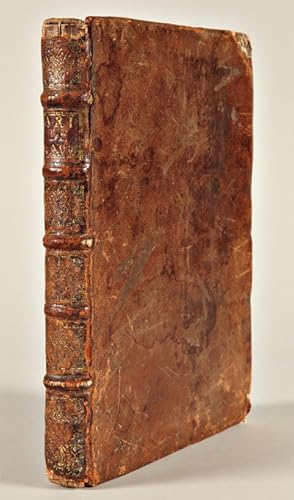
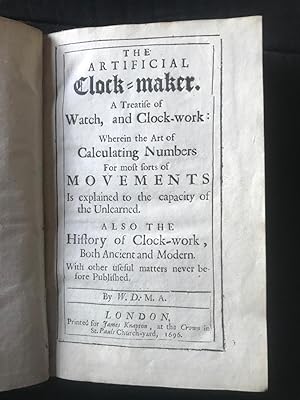
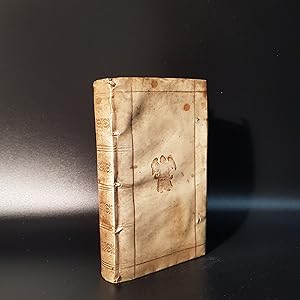
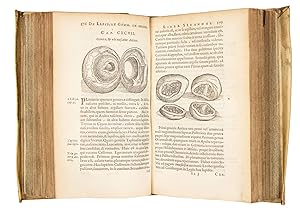
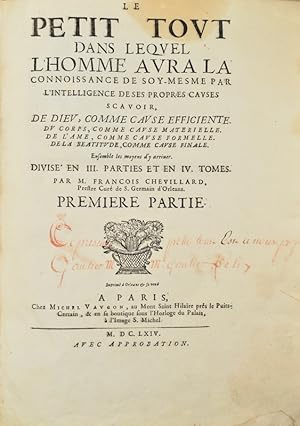
![Image du vendeur pour Lettres missives du Sieur de Rangouse. [Lettres héroïques aux grands de l'Estat]. mis en vente par Bonnefoi Livres Anciens](https://pictures.abebooks.com/inventory/md/md31492651704.jpg)
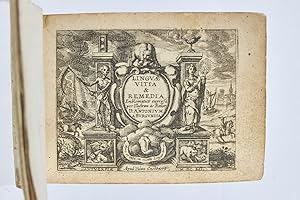

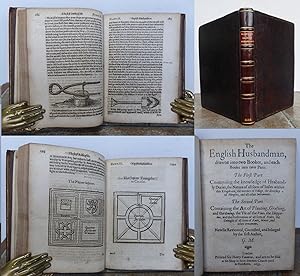
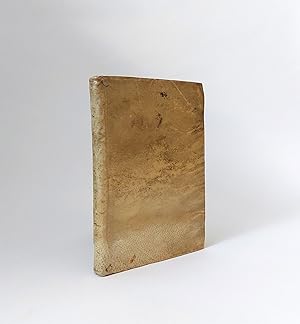
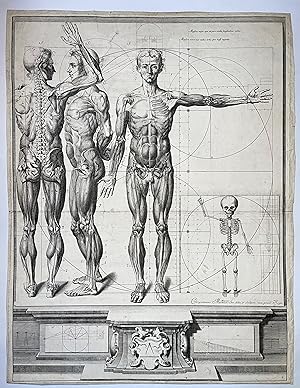
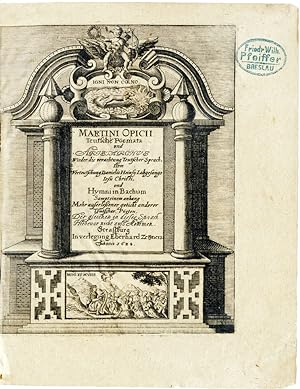
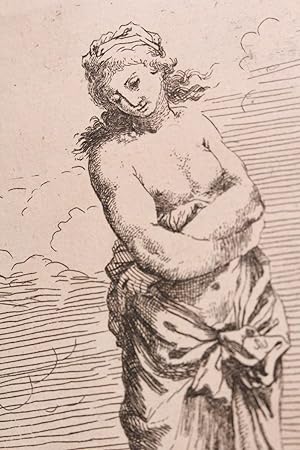
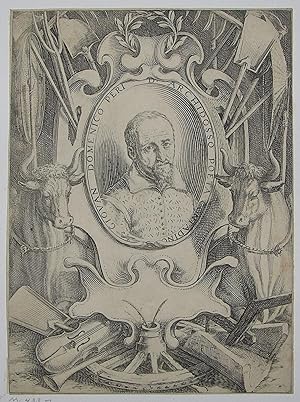
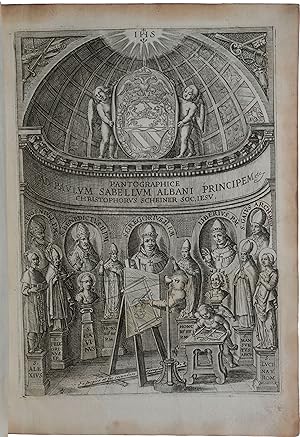
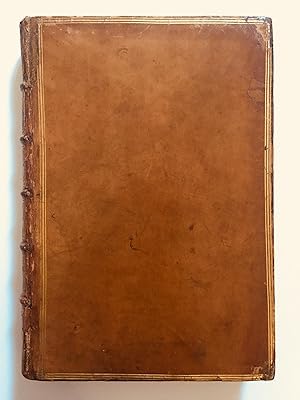
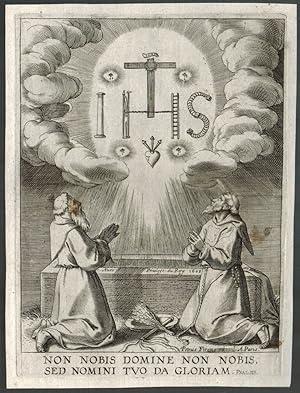
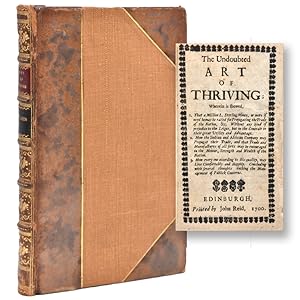
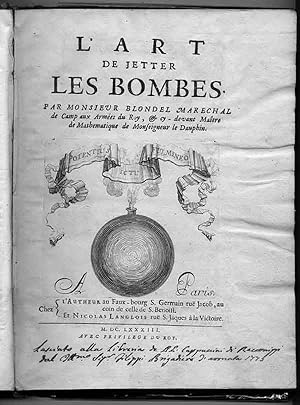
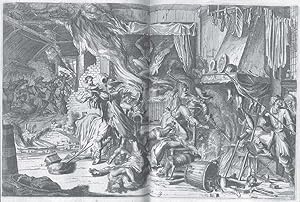
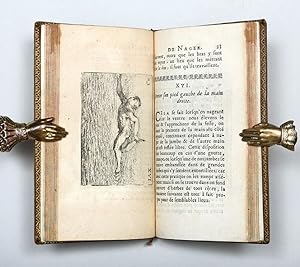
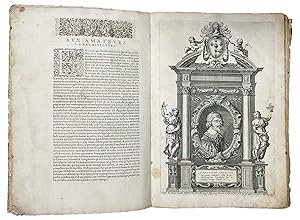
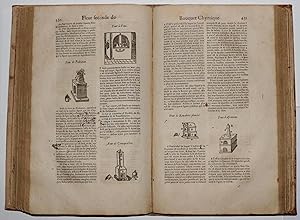
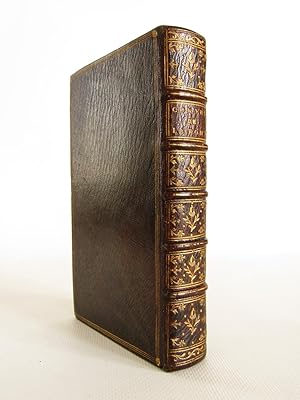
![Image du vendeur pour [De Imitatione Christi. 1640]. De imitatione Christi libri IV. mis en vente par Bonnefoi Livres Anciens](https://pictures.abebooks.com/inventory/md/md22224138523.jpg)
